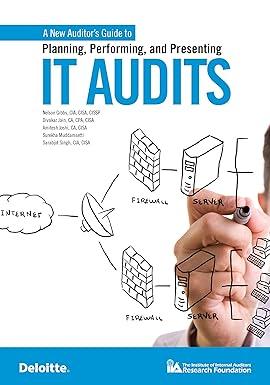Answered step by step
Verified Expert Solution
Question
1 Approved Answer
For Expenses and Revenue. I need help understanding how to complete these. Required information Exercise 7-21B Complete the accounting cycle using long-term asset transactions (LO7-4,
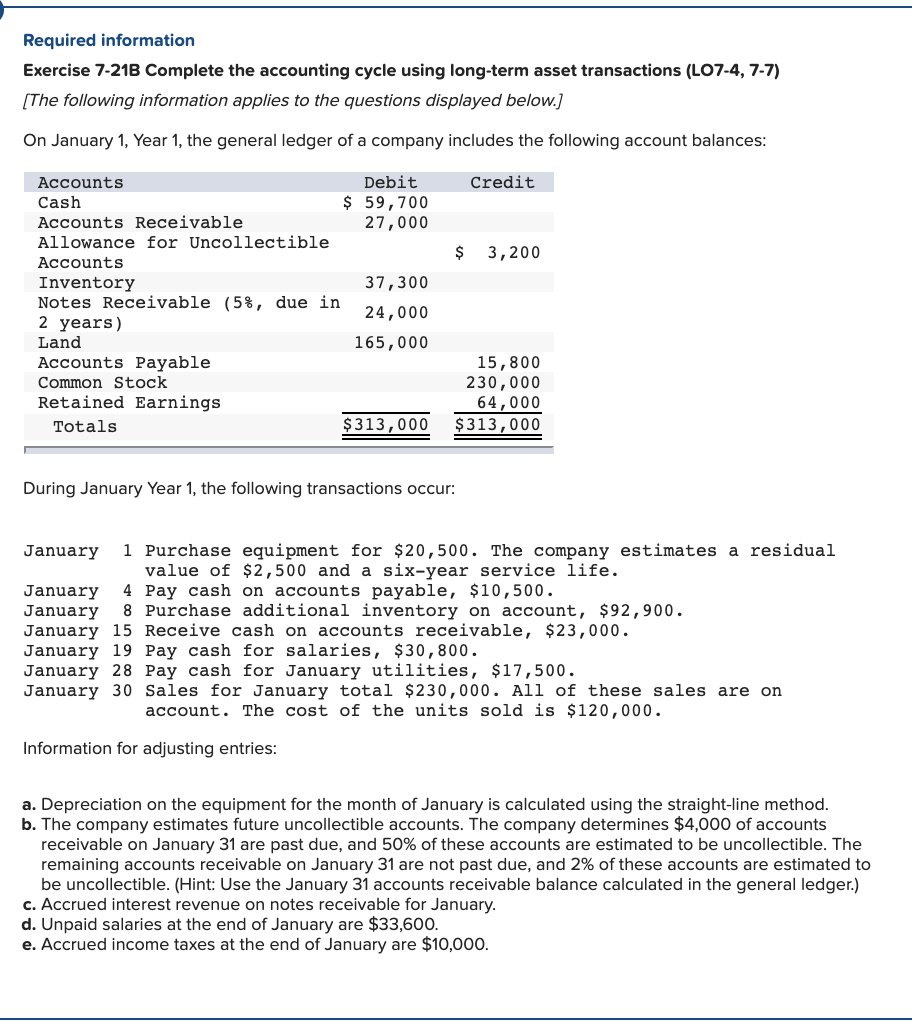
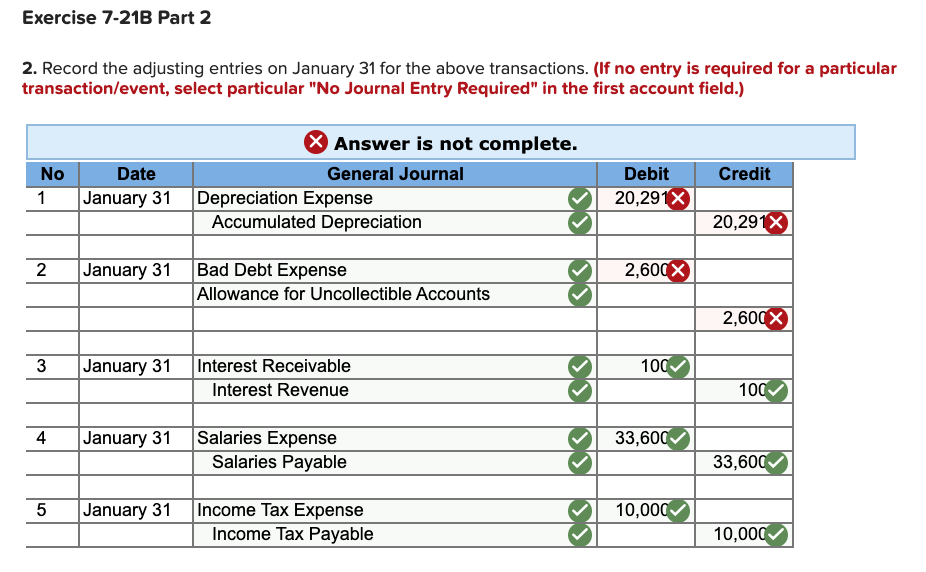
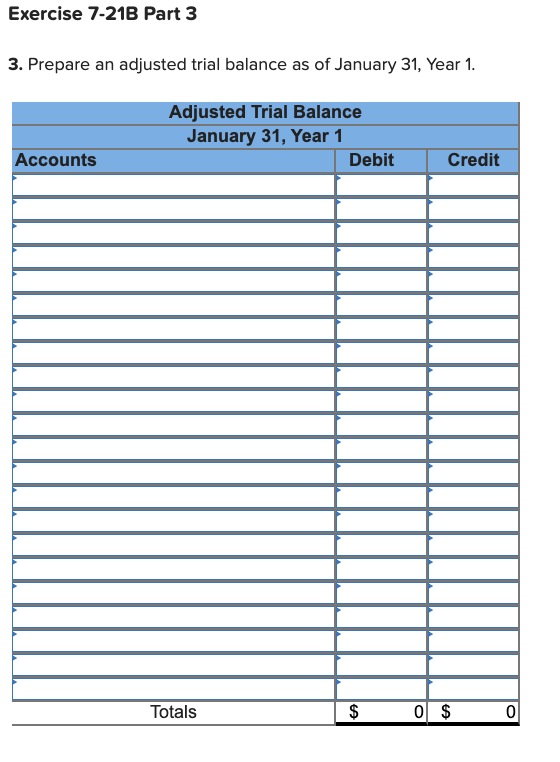
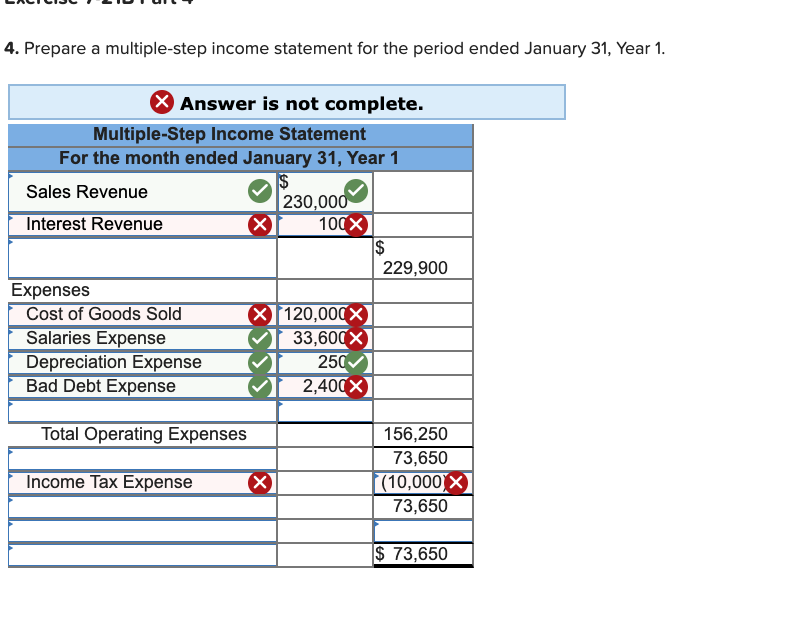
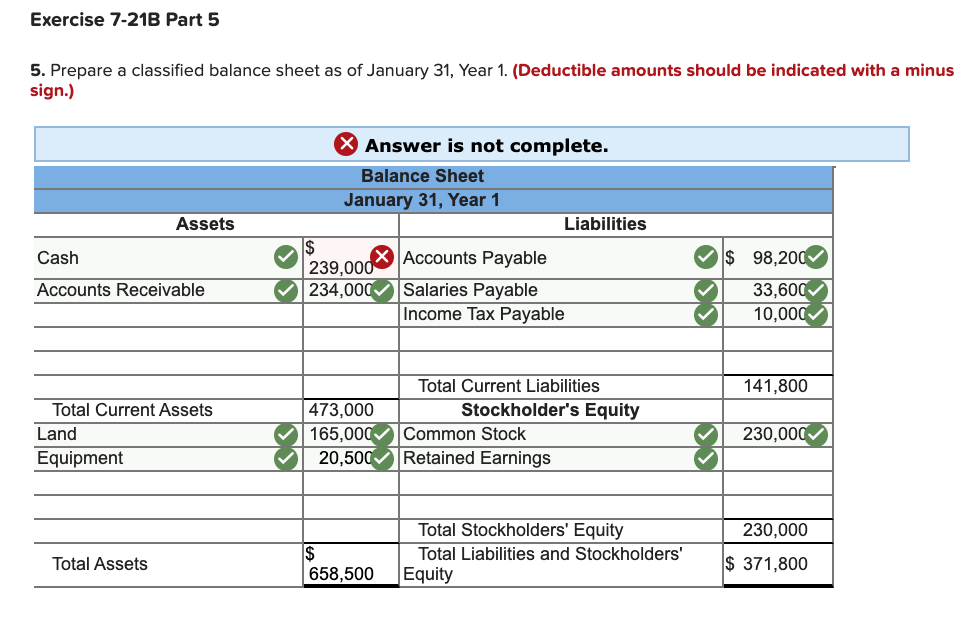
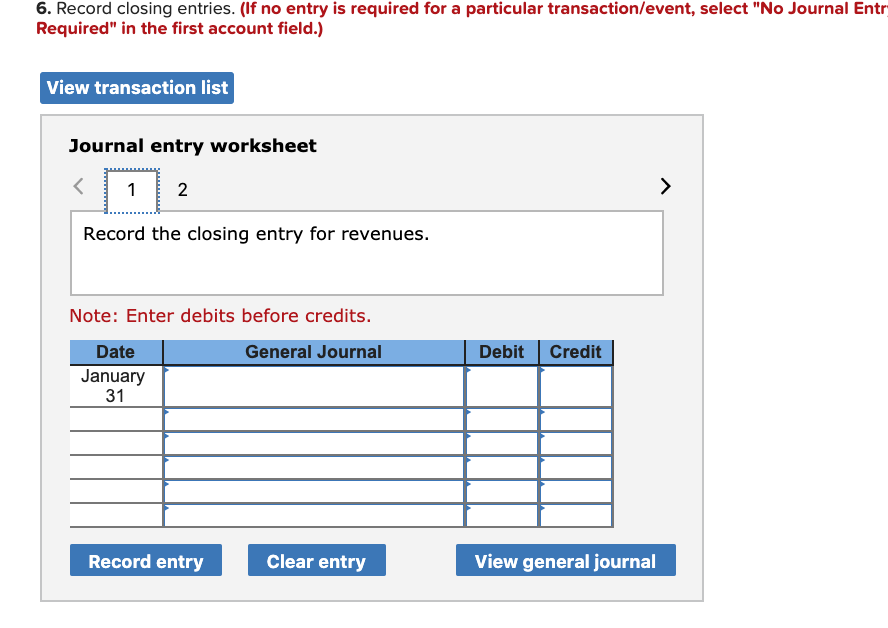
For Expenses and Revenue.
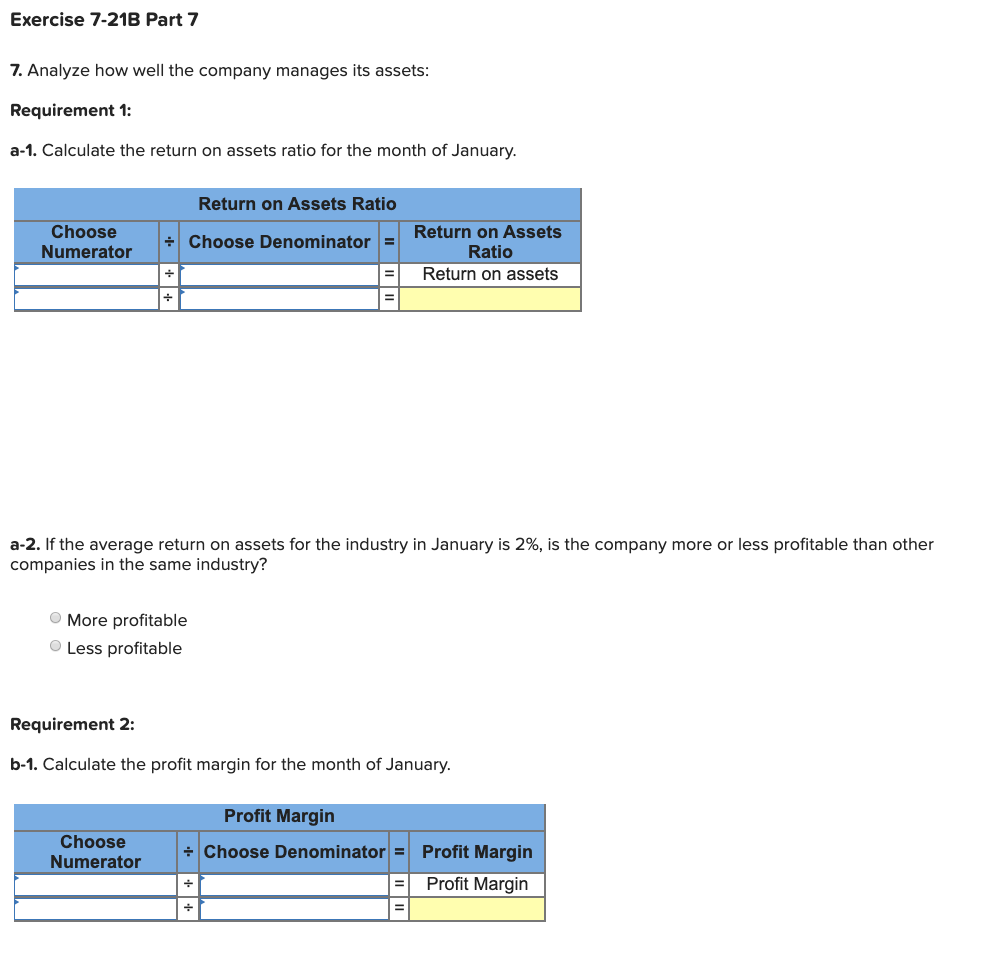
I need help understanding how to complete these.
Required information Exercise 7-21B Complete the accounting cycle using long-term asset transactions (LO7-4, 7-7) [The following information applies to the questions displayed below.) On January 1, Year 1, the general ledger of a company includes the following account balances: Credit $ 3,200 Accounts Debit Cash $ 59,700 Accounts Receivable 27,000 Allowance for Uncollectible Accounts Inventory 37,300 Notes Receivable (5%, due in 24,000 2 years) Land 165,000 Accounts Payable Common Stock Retained Earnings Totals $313,000 15,800 230,000 64,000 $313,000 During January Year 1, the following transactions occur: January 1 Purchase equipment for $20,500. The company estimates a residual value of $2,500 and a six-year service life. January 4 Pay cash on accounts payable, $10,500. January 8 Purchase additional inventory on account, $92,900. January 15 Receive cash on accounts receivable, $23,000. January 19 Pay cash for salaries, $30,800. January 28 Pay cash for January utilities, $17,500. January 30 Sales for January total $230,000. All of these sales are on account. The cost of the units sold is $120,000. Information for adjusting entries: a. Depreciation on the equipment for the month of January is calculated using the straight-line method. b. The company estimates future uncollectible accounts. The company determines $4,000 of accounts receivable on January 31 are past due, and 50% of these accounts are estimated to be uncollectible. The remaining accounts receivable on January 31 are not past due, and 2% of these accounts are estimated to be uncollectible. (Hint: Use the January 31 accounts receivable balance calculated in the general ledger.) c. Accrued interest revenue on notes receivable for January. d. Unpaid salaries at the end of January are $33,600. e. Accrued income taxes at the end of January are $10,000. Exercise 7-21B Part 2 2. Record the adjusting entries on January 31 for the above transactions. (If no entry is required for a particular transaction/event, select particular "No Journal Entry Required" in the first account field.) No 1 Credit X Answer is not complete. General Journal Depreciation Expense Accumulated Depreciation Date January 31 Debit 20,291X 20,291% 2 January 31 2,600X Bad Debt Expense Allowance for Uncollectible Accounts 2,600X January 31 Interest Receivable Interest Revenue 100 1007 January 31 33,600 Salaries Expense Salaries Payable 33,600 ok kok January 31 Income Tax Expense Income Tax Payable 10,000 10,000 Exercise 7-21B Part 3 3. Prepare an adjusted trial balance as of January 31, Year 1. Adjusted Trial Balance January 31, Year 1 Debit Accounts Credit Totals 0 $ 0 LACI LIJE LI ULT 4. Prepare a multiple-step income statement for the period ended January 31, Year 1. X Answer is not complete. Multiple-Step Income Statement For the month ended January 31, Year 1 Sales Revenue Interest Revenue 230,000 100 X ) | 229.900 Expenses | Cost of Goods Sold Salaries Expense Depreciation Expense Bad Debt Expense X1120.000 V 33,600x 250 i 2,400x Total Operating Expenses 156,250 73,650 (10,000 X 73,650 Income Tax Expense $ 73,650 Exercise 7-21B Part 5 5. Prepare a classified balance sheet as of January 31, Year 1. (Deductible amounts should be indicated with a minus sign.) Assets X Answer is not complete. Balance Sheet January 31, Year 1 Liabilities 239.000 Accounts Payable 234,000 Salaries Payable Income Tax Payable Cash Accounts Receivable $ 98,200 33,600 10,000 141,800 Total Current Assets Land Equipment 473,000 165,000 20,500 Total Current Liabilities Stockholder's Equity Common Stock Retained Earnings 230,000 230,000 Total Stockholders' Equity Total Liabilities and Stockholders' Equity Total Assets $ 371,800 658,500 6. Record closing entries. (If no entry is required for a particular transaction/event, select "No Journal Entry Required" in the first account field.) View transaction list Journal entry worksheetStep by Step Solution
There are 3 Steps involved in it
Step: 1

Get Instant Access to Expert-Tailored Solutions
See step-by-step solutions with expert insights and AI powered tools for academic success
Step: 2

Step: 3

Ace Your Homework with AI
Get the answers you need in no time with our AI-driven, step-by-step assistance
Get Started


